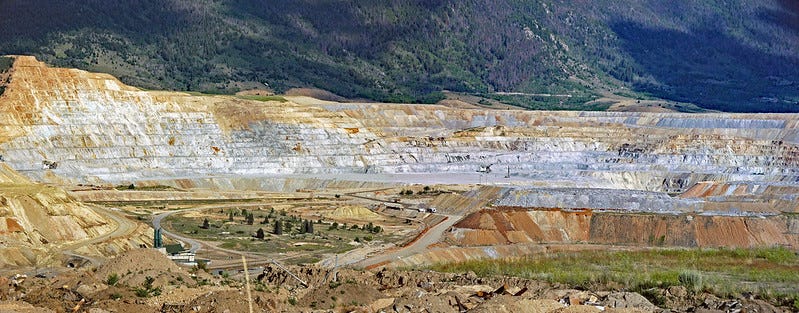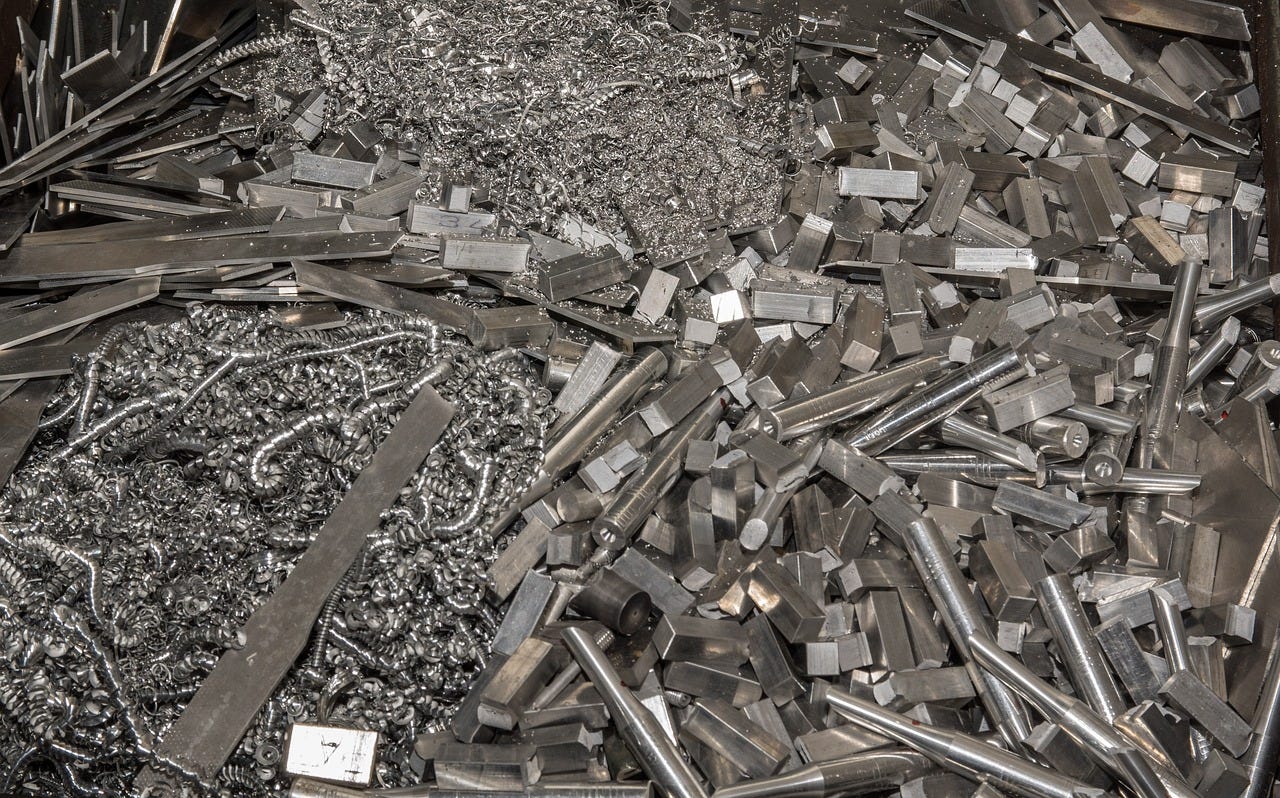Battery pressures mount, so we dive into recycling
Announcing a new collaborative project (and a round-up)
Climate technologies require enormous amounts of metal. I’m Ian Morse, and this is Green Rocks, a newsletter that doesn’t want dirty mining to ruin clean energy.
This piece is the first in a series written in collaboration with popular battery newsletter Intercalation Station. In the coming weeks, we will be drilling down into the recycling of EV batteries — a technology that some of the world’s most valuable companies plan to roll out in the hundreds of millions. Together we’ll be investigating the technology, policy, companies, and science that underlie the fledgling business of lithium-ion battery recycling.
Every day in 2030, tens of thousands of EV batteries will likely meet the end of their lives. Current recycling technology threatens to leave many of those batteries to waste. This only adds to the fears of national security hawks and environmentalists who worry about mineral shortages. Just yesterday, the head of the International Energy Agency expressed concern that continuing business-as-usual may even slow the energy transition.
Companies, especially in the US and Europe, have begun to tout solutions to recover more than 90% of materials from batteries. Panasonic, a Tesla battery partner, is collaborating with Redwood Materials to reuse their battery materials. Li-Cycle has become the first company to cut the ribbon on an EV recycling hub in North America. Most recently, Volkswagen has attracted headlines on its recycling process that claims to recover 95% of materials.
The issue is, scientists say recycling still has major technological and economic barriers to overcome before it can recover materials and reduce supply pressures. EV battery recycling, then, risks becoming the kind of empty buzzword that surrounds other recycling industries like plastic. That is, unless major improvements happen.
“We’ll have a problem if we don’t make sure that all these EV batteries are responsibly recycled, and an additional problem if we can’t source the raw materials for new EVs, which are in high demand,” says Rob Sommerville, a Faraday Research Fellow and engineer at the University of Birmingham. “There are a lot of steps we could take to safeguard our supply of materials, and guarantee high levels of battery recycling.”
Lithium-ion batteries are set to power the world, but they are far more complex your common handheld battery. As a result, recyclers are having a lot of trouble figuring out how materials can be recovered, so that toxic components don’t end up in landfills and countries can secure their own metals. In a circular economy, a large chunk of the materials that make it into your life will have been used elsewhere before.
But, for the technologies promising to prevent climate disaster, recycling is far from ready. Without recycling, waste will pile up, and global markets may suffer shortages as they try to open more mines. From several interviews with prominent battery scientists, we highlight the main concerns:
The economic model prioritizes metals that are going out of style and sends most components to the trash.
Cobalt and nickel are often a recycler’s most valuable products. However, supply issues have deterred battery makers from producing cobalt- and nickel-rich batteries.
Batteries growing in prominence, which are manganese-rich and iron-rich, don’t have very many valuable components. If a mine can produce these metals more cheaply, recyclers can’t compete.
As a result, many components are not used again and may in fact be rendered unrecycleable in the recycling process. It’s difficult for many of the metals to return to the level of purity needed for sports-car like energy.
Current recycling presents few environmental benefits, and may endanger workers.
Cathodes are held to current collectors by tough binders that can only be broken by a chemical called NMP, which the EU is considering phasing out completely, and the US EPA has deemed harmful to human health.
Studies suggest that current recycling presents negligible climate benefits, because of the energy intensity and use of fossil fuels.
Regulation to encourage responsible recycling is weak, or as in the case of the US, non-existent.
In all, there’s a lot of work to do, but there are pathways forward. Over the next several weeks, Green Rocks and Intercalation Station will pore through the initiatives and possibilities. As Faraday Fellow Gavin Harper notes:
As the volume of Lithium Ion Batteries scales, we need recycling processes suited to the volumes of waste that we anticipate. There are several bottlenecks in the process. Removing the pack and disassembling it is currently labour intensive. Automation, robotics and AI could help make for a more efficient process.
Be sure to check out Intercalation Station for the next post in this series.

Climate goes metal
The head of the International Energy Agency says there’s a “looming mismatch” between global climate ambitions and the availability of critical minerals. Stockpiling can in some cases help, he said.
A report from Indigenous Peoples Rights International revealed patterns of violence against Indigenous land and human rights defenders in the face of mining, agribusiness and energy companies.
More than 140 jurists, researchers, and politicians have requested the removal of a judge overseeing a lawsuit that would determine damages given to victims of the 2015 Mariana tailings dam disaster in Brazil.
Meanwhile, hundreds of families affected by the Mariana disaster remain without housing, according to reports.
The US Department of Energy is funding a company’s research into cobalt extraction in Idaho.
The Philippines will conduct an industry-wide audit of its mostly nickel mines.
A mine in Saskatchewan, Canada, says it can become the first carbon neutral copper producer.
Lynas, the largest rare earths processor outside China, is applying for a permanent waste storage facility in Malaysia.
Mining companies in Chile are worried that a royalty hike would jeopardize their businesses, where copper grades are already shrinking.
A proposal to expand a copper tailings facility in British Columbia has ignited backlash.
US House representatives wrote to the Interior Secretary, saying that due to clean energy technology demands, “We are working to pass legislation that ends the obsolete system put in place by the Mining Law of 1872, and replace it with a modern leasing system designed to protect the interests of American taxpayers and our nation's public lands.”
Zambia shuttered a copper mine that had struggled with investment and that is tied to a company under provisional liquidation.
Reads
≠ endorsement
From Yours Truly: The ‘other side’ of batteries (PV Magazine)
Newcrest's Cadia gold mine tailings dam collapse in 2018 causing concern (ABC News)
California's 'White Gold' Rush: Lithium In Demand Amid Surge In Electric Vehicles (NPR)
Gravity powers batteries for renewable energy (Science Magazine)
Analysis: Can the Rhine's white gold power Germany's green e-car race? (Reuters)
Biden's conundrum: Expand EVs without harming the Earth (E&E News)
Cobalt price jump underscores reliance on metal for electric vehicle batteries (Financial Times)
The end of an era: how the global steel industry is cutting out coal (The Narwhal)
Greenland’s Rare-Earth Election (The Atlantic)
Mining Risk: Will Fortune Favour the Brave? (Wood Mackenzie)








